A view of the city from our room.
It was hazy but not as bad as Beijing.
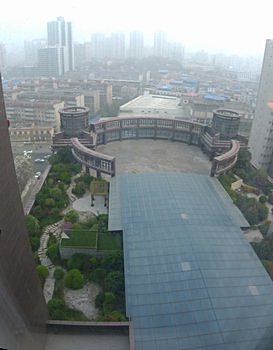
The lobby and a couple of pieces of sculpture.
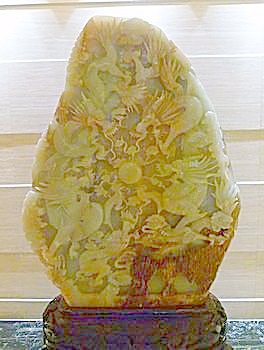
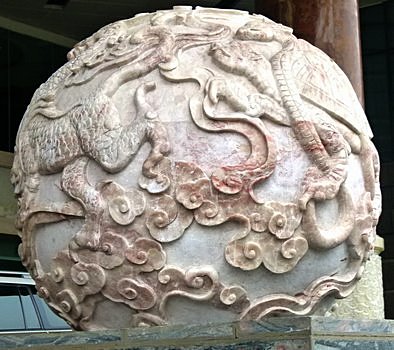
Our first stop was a workshop where jade is carved.
We were greeted by a jade statue carved to look like one of the Terracotta Army the city is famous for.
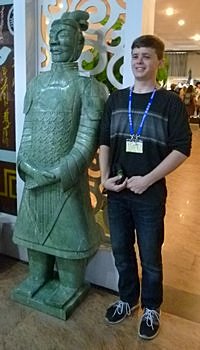
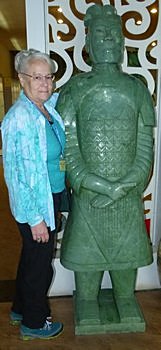
A few of the carvings that were on display.
It comes in many colors.
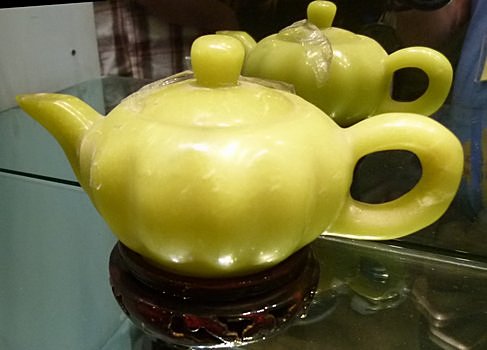
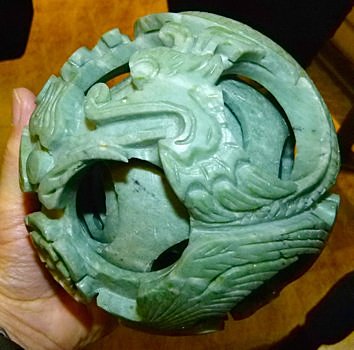
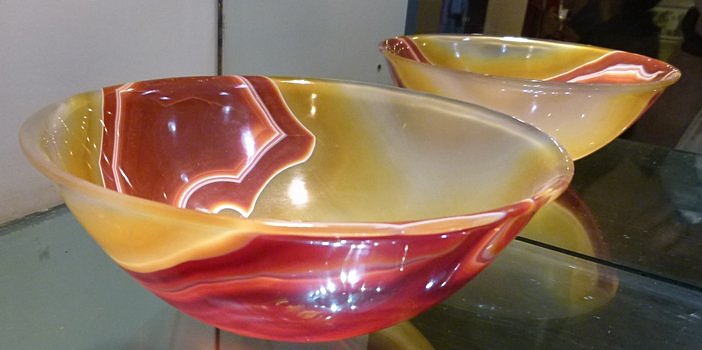
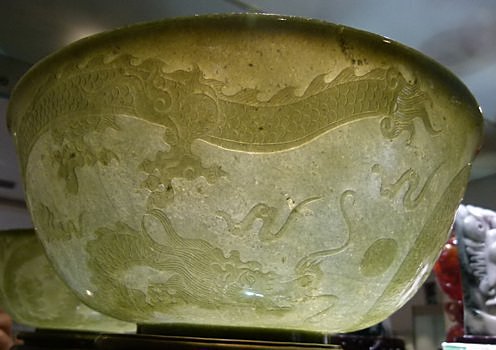
One of the craftsmen making a nested ball.
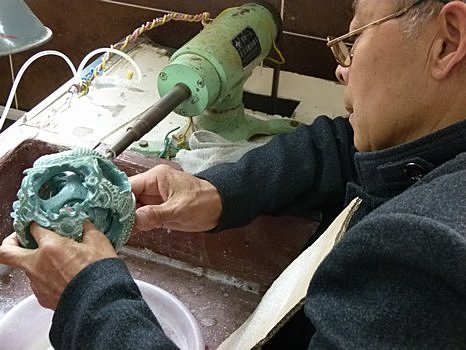
There was jade and paintings offered for sale.
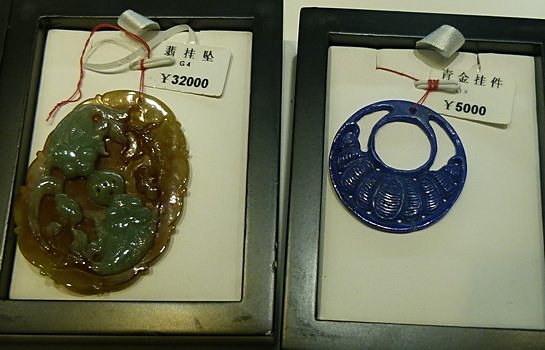
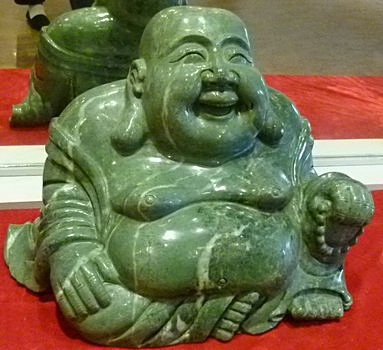
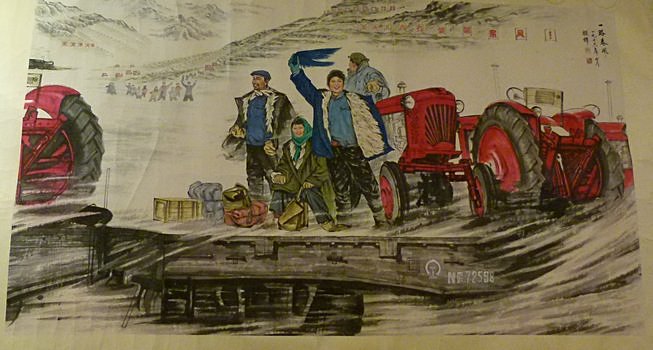
Just outside the shop was one of the smallest cars I have ever seen.
Space for two or three but I don't think it would pass our safety requirements.
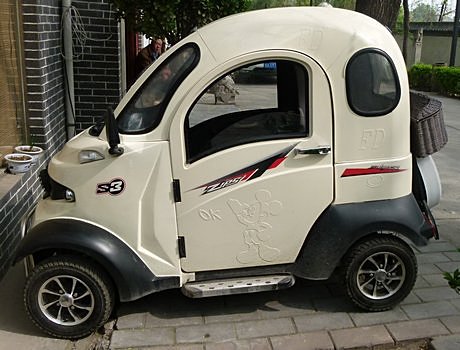
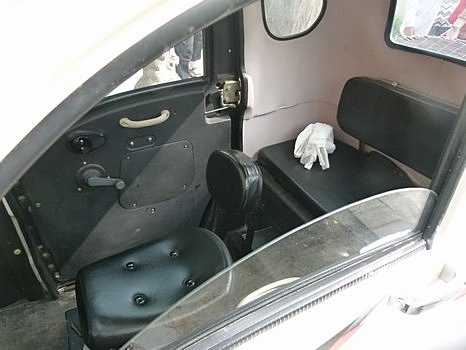
We passed one of the power plants that are responsible for much of the smog in the country.
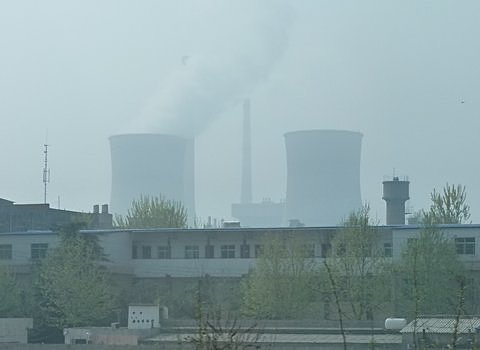
This was on the center of a traffic circle.
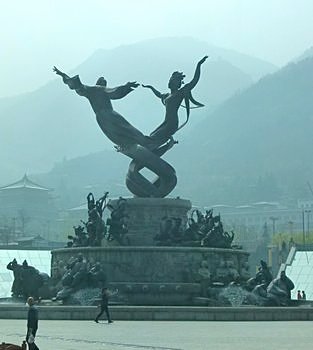
These warriors from the Terracotta Army seem to have sprouted human heads.
A millstone used to prepare the clay used to make the army.
You can buy a replica in the shop.
A mold for a miniature model of one of the warriors.
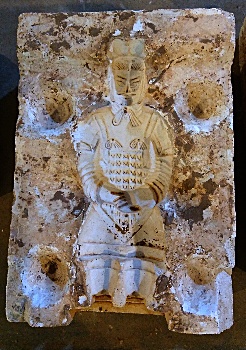
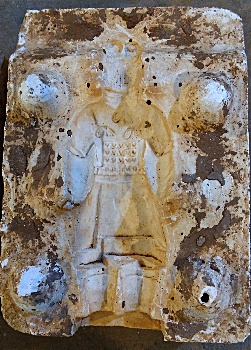
Working on a model.
Cleaning mold flashing.
They can also make a replica of you in terracotta or metal, miniature or life size.
They also make full size replicas of the army.
Generals were all taller than the lower ranks.
The hair is an indicator of their duties.
Archers and infantry wore their hair in a top knot.
A craftsman working on a table which will be painted with enamel and decorated.
Artwork and private compartments for high ranking officials to rest or travel.
Would you like a dining room set, a nice vase, globe made of minerals or some red enamelware?
Emperor Qinshihhuang's Mausoleum site and Museum Home to the terracotta warriors.
The large buildings on the right cover the actual archaeological excavations.

This is the first 14260 square meters (153500 square ft.) of Pit 1.to be unearthed so far.
It holds more than 6000 pottery warriors and horses and 20 wooden chariots.
Plans found on site indicate that more than10,000 square meters (108000 square ft).remain to be excavated..
There are expected to be another 4000 warriors and 30 chariots.
The dark spot half way back on the right is a tomb built long after the warriors were buried and having nothing to do with them.

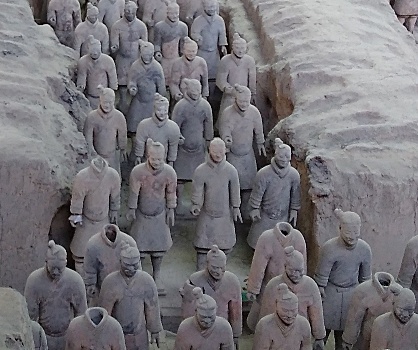
Here are the real thing not replicas.
Each is a unique individual and may have been modeled on members of the actual army.
They were originally painted with vivid colors but those have faded or flaked off over the years.
The floors of the galleries were made of rammed earth covered with fired tiles.
There were once chariots here but since they were made of wood very little remains.
The initial excavation reveals the jumble that must be reassembled.
Yep, we really were there.
After restoration, that is the figures not us, we are just right as we are.
Some of the figures had little notes on them.
A location reference possibly.
Toward the back of the building there was a work area where figures that had been restored were being stored.
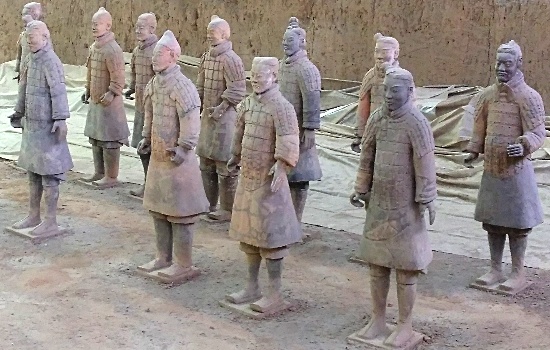
A small pit with elements that you don't see in the major excavation.
In a museum that adjoins the excavation we could get a better look at the details in the figures of a horse and archer.
Here is an active work area, though not while we were there.
It does give an idea of the amount of work that is involved.
Layers of soil give clues to the construction of the galleries.
Pit 3, known as the command center, is much smaller with only 67 figures, one chariot, and 34 bronze weapons.
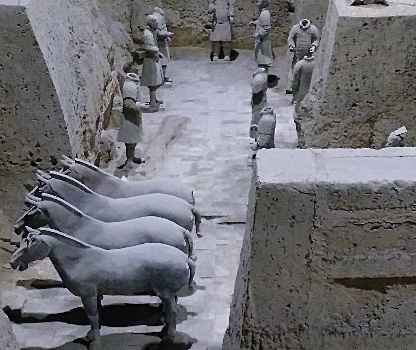
This set of figures originally included a chariot which has decayed.
And a restoration showing the best idea of what a chariot and charioteer looked like originally.
Some of the flowering trees outside the museum.
Some of the group picked up chunks of jade from the free table outside this shop/showroom.
Driving through the city we noticed the jumble of wires/cables (mostly phone) on the poles.
The next stop was the Xanxi Grand Opera House for dinner and musical entertainment.
Inside we found a venue worthy of royalty.
A variety of dishes.
Mostly vegetables, some meat, and probably 20 different kinds of dumplings.
After a great meal.
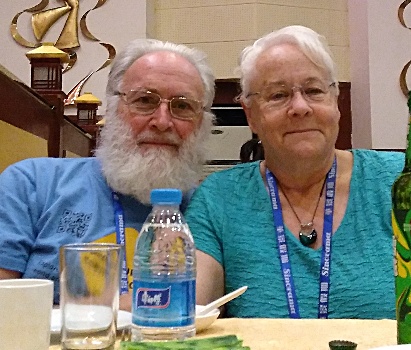
The musical program began with traditional music featuring instruments and songs that would have been common in the Hua Qing Palace.
It was located at the base of the Lishan mountain and used by the Tang emperors.
The White Sleeve Dance originated as a folk dance in the Wu kingdom Jin Dynasty 256 to 318 CE.
From there it spread to the imperial court of the Tang Dynasty.
The flowing sleeves are made from raime fiber.
It is reportedly inelastic and brittle making it difficult to work but these performers made it flow.
The program called this instrument panpipes but it didn't look or sound like any panpipe I had ever seen.
The Chinese name is sheng and is actually a free reed instrument.
The number we heard was from the Tang dynasty.
This was described as a group of young girls returning from a spring outing.
Again from the Tang dynasty.
This was part of the retelling and celebration of a military victory of Prince Qin.
It combined instrumental, vocal and masked dance performances
March third of the lunar calendar was the "Spring Purification Festival".
It was a time to go to the countryside to enjoy the red and white peach blossoms.
These dancers.were portraying returning from the beautiful sunny spring day.
A trumpet solo was a celebration by young and old for a bumper harvest of dates.
The "Fairy Dance in Feathered Costumes" was created when Emperor XuanZong was inspired by a dream.
In it many fairy ladies in rosy cloud like costumes were dancing around palaces on the moon.
He composed the music and asked his favorite concubine to choreograph the dance.
The title of this percussion piece was "Gossiping Ducks and Hungry Tiger"
I don't think it needs more explanation.
Nor can I provide more.
The final number had elements of nearly all the previous ones.
It was a fitting conclusion to our introduction to the music and dance of the Tang Dynasty.
Xian is a totally modern city.
Though like other cities in China there is a problem with air pollution.
Some flowers we saw in roadside parks.
I think that we have seen a KFC in every country we have visited.
China is no exception.
We walked through a plaza with some upscale stores on our way to lunch.
Decorations just outside the restaurant.
View from the elevator, the room and the meal.
a shop in a tunnel built as a bomb shelter during war with Japan
An apartment on the way to the zoo.
Zoo entrance
Red pandas.
Pandas! They have a lot of them.
A couple of the other residents.
As you leave the zoo.
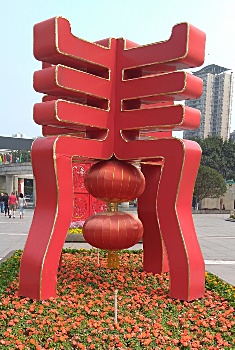
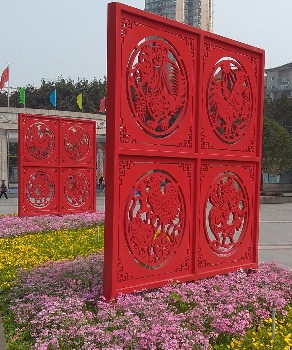
Two striking twin towers along the river.
